No Place to Call Home
One woman’s death on the streets is leading Eau Claire to re-examine why the number of people experiencing homelessness is increasing, despite efforts to help
Julian Emerson, photos by Andrea Paulseth |
Julian Emerson, photos by Andrea Paulseth |
Spend some time in downtown Eau Claire this summer and it likely won’t take long to notice someone who is homeless.
Sightings of homeless residents — many lugging backpacks or bags full of their belongings — walking along downtown streets and elsewhere in the city have become increasingly commonplace in recent months. They can be seen at parks, on benches scattered throughout downtown, in out-of-the-way alleyways and other locations, and even in building entrances.
Some who are homeless spend nights at Sojourner House, Beacon House, and Hope Gospel Mission shelters. Others take shelter with whatever friends or family are willing to put them up — commonly referred to as “couch surfing” — while still others live in their vehicles, in encampments, or wherever they can on the streets.
article continued below …

photo by Andrea Paulseth
This is Marilyn Roeber, age 66. She slept on this Barstow Street bench in downtown Eau Claire many times over the last couple of years, including for two days prior to the moment captured here. This photo was taken at 1:05pm on Wednesday, June 16. By 2:45pm that same afternoon, police received a call and arrived to find her unresponsive. With no indication of trauma, drugs or alcohol, or anything suspicious, she was declared dead.
Read the Editor’s Note from Volume One’s publisher Nick Meyer about this photo, and why we chose to publish it.
FOR MORE PERSPECTIVE ON THE PHOTO ABOVE:
The Woman on the Bench
by Julian Emerson
Editor’s Note
by Nick Meyer
… article continued
At 7:30am on a recent weekday, 15 homeless people gathered in downtown’s tiny Wilson Park, most of them having spent the previous night at nearby Sojourner House. Some discussed events of the previous evening, while others talked about their plans for that day. One couple queried each other about finding bus passes so they could shop at Walmart.
Later that evening, Jason and Christina Fleming waited outside of Sojourner House where they said they have spent nights for the past six weeks. They’re among a few dozen seeking shelter there most nights this summer, a number that is expected to grow significantly later this year when the weather turns cold.
“There are homeless people all over the place,” Jason said. “Just look around and you see all kinds of us.”
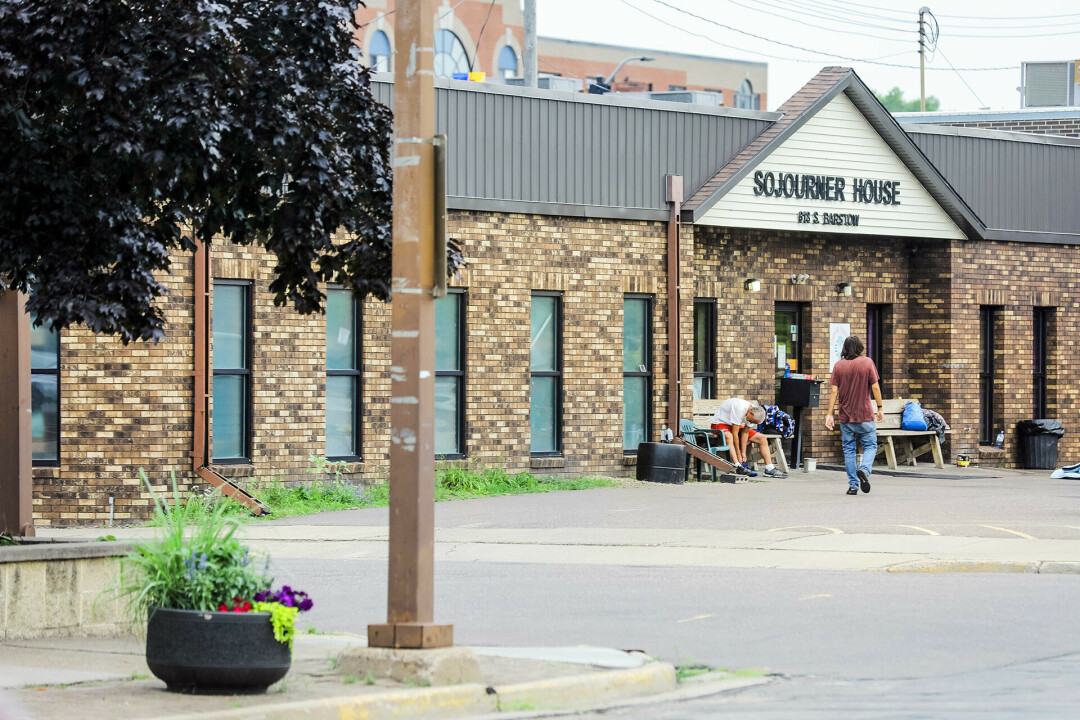
Local homeless residents are more visible, especially in downtown Eau Claire, for a number of reasons, leaders of local agencies who work with that population said. Chief among them is the return of Sojourner House to its 618 S. Barstow St. shelter site in April after having been relocated for the previous 13 months, first to Hobbs Municipal Ice Center and then to a former Gordy’s grocery story on the city’s southwest side, because social distancing to slow the spread of COVID-19 was not possible at Sojourner because of space constraints.
Adding to the number of homeless residents downtown is the fact that Positive Avenues, a day shelter where many of them spent time, has been discontinued and replaced by Gaining Ground, a Lutheran Social Services-operated program that links homeless people to needed assistance.
Another popular homeless daytime gathering site was the L.E. Phillips Memorial Public Library, 400 Eau Claire St. However, library services have temporarily relocated to a site on the city’s south side while the current library building is closed for renovations, meaning homeless people can’t access it.
Determining the number of homeless people is difficult and inexact, but the number of Chippewa Valley residents without homes of their own seems to have grown significantly during the coronavirus pandemic, reaching the highest levels ever seen by officials from agencies that work with that population.
TJ Atkins, executive director of The Community Table, a downtown site where people in need can get daily meals, said she has noticed an influx of new homeless residents in recent months. Statistics back up Atkins’ observances. Prior to the pandemic, 20% of The Community Table’s clientele identified as being homeless. In a recent survey, that figure had climbed to 42%, she said.
Other numbers point to a larger homeless population as well. A system used by staff members at Western Dairyland Economic Opportunity Council to track the number of chronically homeless people has grown during the past two years, officials said.
Similarly, last winter the number of people spending nights at Sojourner, when the shelter was at the former grocery store on West Clairemont Avenue, topped 100 some nights, much higher than at the shelter’s downtown site. The number of homeless students in the Eau Claire school district declined slightly last year to 239, but the actual total was almost certainly much higher because determining the number of homeless students during the pandemic was challenging, said Dani Claesges, the school district’s homeless program coordinator.
“Making progress on our homeless situation in Eau Claire is going to take new approaches. That is really hard and really messy. It will take commitment and real, sustained effort.”
Lieske Giese
director, Eau Claire City-County Health Department
During walks through Owen Park, Eau Claire City-County Health Department Director Lieske Giese encounters more homeless people than she used to see. With more of them on the streets during a recent stretch of hot weather when temperatures climbed well above 90 degrees, her department and other agencies devised plans to get them water and shelter as a respite from the heat.
“It is concerning to see more homeless people out on the street with no way to deal with the extreme weather,” Giese said.
Anna Cardarella, chief executive officer for Western Dairyland, said she notices more homeless people on her drives through downtown. The number of people without homes appears to have increased during the pandemic, she said, and seems to keep rising.
“It’s much more visible,” she said. “You see more people sleeping on the streets, more at parks. We are seeing a lot of people from out of town. It is definitely a concern.”

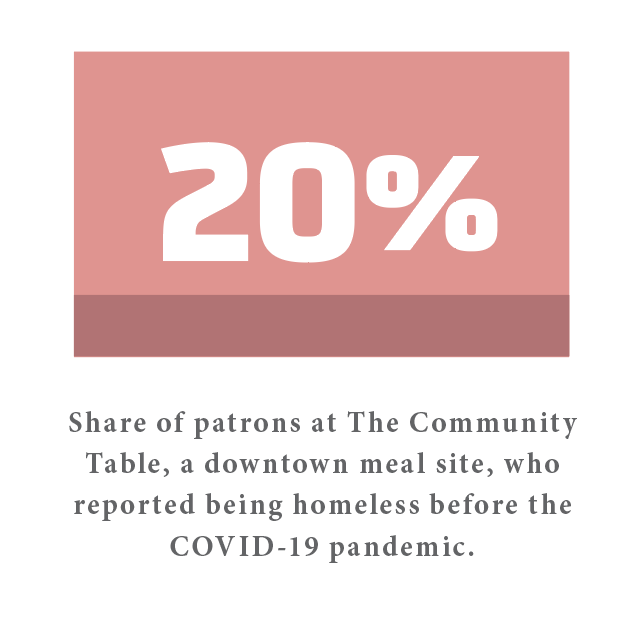
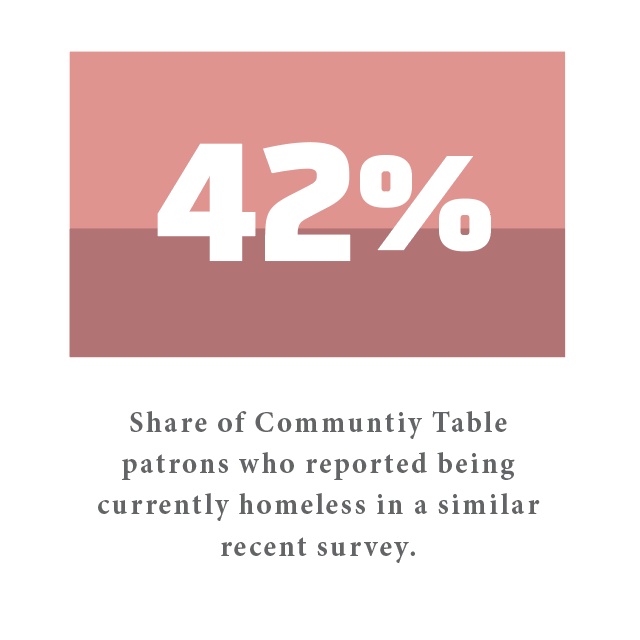
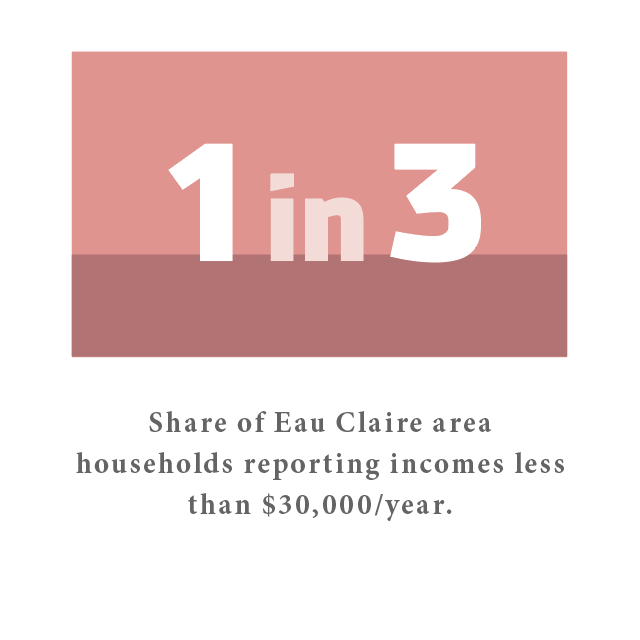
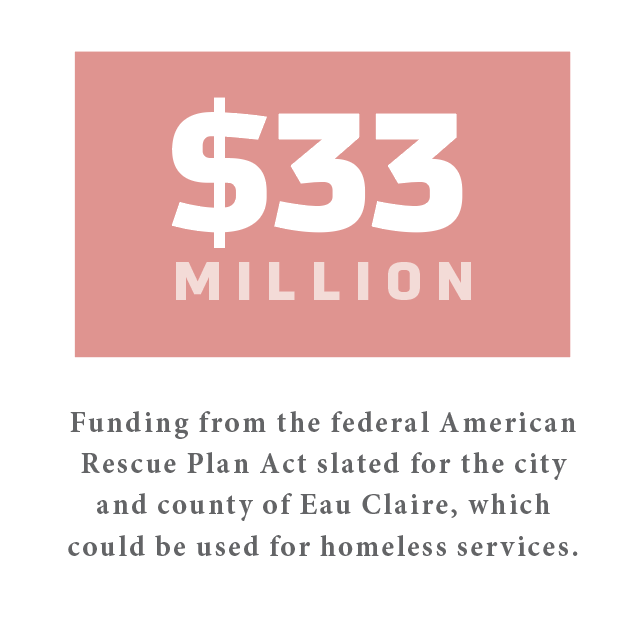
Jason and Christina Fleming know all about losing a home, and the painstaking struggle to try to find new housing. They lost their place in rural Bloomer about two years ago, they said, after 48-year-old Jason lost his job. They subsequently spent time in Chippewa Valley motels, enduring various difficulties as they tried to get back on their feet.
Then, last November, they bought a trailer in a mobile home park in the town of Seymour. Their new home was affordable, they said, and life seemed to be looking up.
“I saw that trailer for sale and thought ‘Finally, a home we can afford,’ ” Jason said. “We were so excited to actually have a place of our own again.”
However, a seemingly good situation turned bad, they said, when they lost that house after a complicated family dispute. Suddenly, six weeks ago, Jason and Christina were once again without a home.
Unable to afford a place to stay, the couple began spending nights at Sojourner House. While they’re grateful for a roof over their heads each night, the Flemings said they’re eager to leave the shelter and find other housing. They have met with Gaining Ground staff to be linked to assistance and recently met with employment specialists. On a recent night as they waited for Sojourner House to open, they optimistically discussed their attempts to better their situation.
“This isn’t a way of life. It’s just a blip. We’ll get to a better place,” said Christina, 50.
Two days later, life on the streets had taken its toll on the couple. As they waited to enter Sojourner House, Jason sat propped against the building, staring resolutely ahead while Christina lay on the cement surface, her face covered with her jacket to avoid talking to anyone.
“Today’s a real hard day,” Jason said. “Days like this, it’s tough to have much hope.”
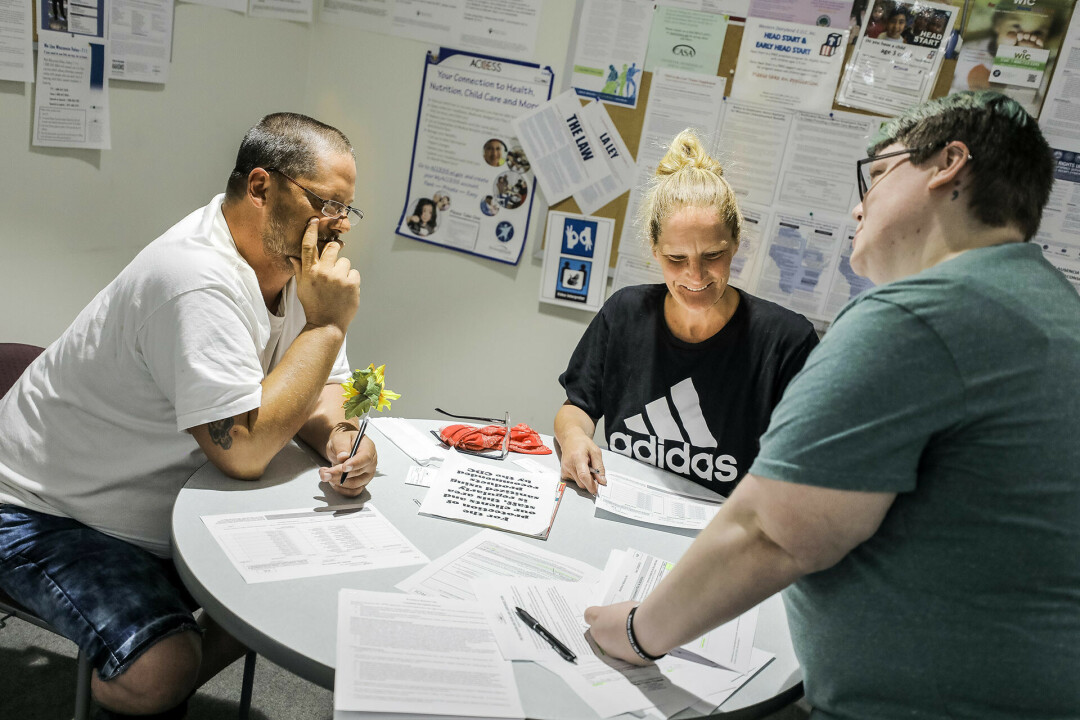
photo by Andrea Paulseth
Jason and Christina Fleming work with a career planner on the FSET program (FoodShare Employment and Training) at the Eau Claire County Job Center. In addition to assistance with paperwork, they each received a new phone to aid in their job searches and involvement in the program.
Cardarella, the CEO at Western Dairyland, acknowledged she sometimes struggles to maintain hope in the face of the growing needs related to homelessness. While she is heartened by the fact the Housing First program the agency operates — which includes 25 units for chronically homeless residents — has gotten some of the area’s highest-needs people off the streets, those clients often need more staffing and services than are available. Many of the program’s participants have serious mental, alcohol, or drug dependence issues that require significant resources in the form of case workers and other assistance that simply isn’t available, she said.
Cardarella recalled a homeless man living for a time this spring outside Western Dairyland’s office along Wisconsin Street. Agency staff spent time with the man, assessed his needs, and learned that he was a military veteran. Eventually they linked him to the Veterans Administration in the Twin Cities, who found him housing. While the case had a good outcome, the man’s image remains with Cardarella.
“It was April, still cold, and you have someone sitting in front of your building,” she said. “You’re supposed to be the agency that is helping people like that. It’s hard to see. And there are a lot more people like him.”
Housing demand in Eau Claire and the surrounding area far outpaces supply, leaving many people — especially those at the bottom of the economic ladder — at risk of losing housing.
A Chippewa Valley Housing Task Force report released in 2019 determined housing shortages exist at all income levels in Eau Claire. With demand for housing far outstripping supply and a rental vacancy rate of only 2%, house and rental prices have increased dramatically in recent years, outpacing income for many and making housing increasingly precarious.
“Even with having the first month’s rent and other assistance, we just can’t find landlords willing to rent to people. If people have a past eviction, a poor credit history, or they have been incarcerated, it’s virtually impossible to find them a place.”
Anna Cardarella
Western Dairyland Economic Opportunity Council, on the challenge of reducing the number of people living in homelessness
According to the 2018 Asset Limited, Income Constrained, Employed (ALICE) report compiled by the United Way of Wisconsin, 43% of households in the city of Eau Claire struggled to pay for housing and other basic living costs such as food, transportation, and medical care. A more recent figure isn’t currently available, but Cardarella and others said they fear it may be higher in the pandemic’s wake.
In such a tight housing market, many of the people her agency assists are at a competitive disadvantage, Cardarella said. For most of them, buying a home is out of the question. Oftentimes, renting one is, too.
“Even with having the first month’s rent and other assistance, we just can’t find landlords willing to rent to people,” she said. “If people have a past eviction, a poor credit history, or they have been incarcerated, it’s virtually impossible to find them a place.”
City officials and builders have taken actions to address the affordable housing shortage. In the past two years the Eau Claire City Council has approved housing projects that include a combined hundreds of units that are subsidized, many in the form of tax credits. However, nearly all of those units are for people with incomes at least 60% of the county’s annual median household income of nearly $60,000, leaving out the largest group of people struggling to make ends meet, as almost one-third of city households earn $30,000 annually or less according to U.S. Census data.
In the meantime, housing costs continue to climb faster than the incomes of many, leaving them at greater risk of losing their homes, local housing advocates said. Adding to concerns is the fact that a federal ban on evicting people behind on paying rent and utilities related to economic hardship because of the pandemic is set to expire at the end of July. Experts predict evictions could spike in upcoming months, leaving more people without homes.
“We have no intentional housing net to catch any of those people,” said Susan Wolfgram, co-chair of the JONAH Affordable Housing Task Force, which advocates and works toward affordable housing solutions in the Chippewa Valley.
Reducing homelessness in Eau Claire will be anything but easy, experts in that field said. Homeless numbers are up in many cities large and small across Wisconsin and the U.S., figures that have grown since the coronavirus pandemic hit last year.
In addition to providing more affordable housing, making inroads on homelessness in Eau Claire will require additional resources, advocates said, especially in the form of treatment for mental health and alcohol and other drug addiction.
Assistance for those and other homeless services could be available in the form of federal American Rescue Plan Act funding designated for local governments as part of coronavirus relief efforts. The city of Eau Claire recently learned it will receive $13 million of that funding, and Eau Claire County is scheduled to get about $20 million.
Both entities will solicit public input on how that money should be spent. Addressing housing needs is among the recommended uses of those dollars.
“You have to be hopeful. It’s the only way you have a chance of getting to a better place.”
Christina Fleming
who has been living in Eau Claire without a home this summer
Housing advocates and those who work with homeless people said the federal dollars represent a golden opportunity to address significant needs in those areas. However, they said, simply spending money on traditional ways homelessness has been addressed in Eau Claire won’t be enough. Agencies must work more closely together, advocates said, breaking down traditional silos and devising new, creative ways to better meet the needs of the homeless. Successful models in other communities could be a starting point, they said.
For instance, a 24-hour shelter that would house many services homeless people need, linking them to assistance while doing away with transportation barriers, could be one model that could improve outcomes for homeless residents here, advocates said. They pointed to such shelters in Madison and Green Bay as successful models worth trying in Eau Claire.
A planned expansion of Sojourner House is scheduled to begin later this year, but perhaps those plans should be revisited to see if that site could accommodate additional services, Wolfgram said.
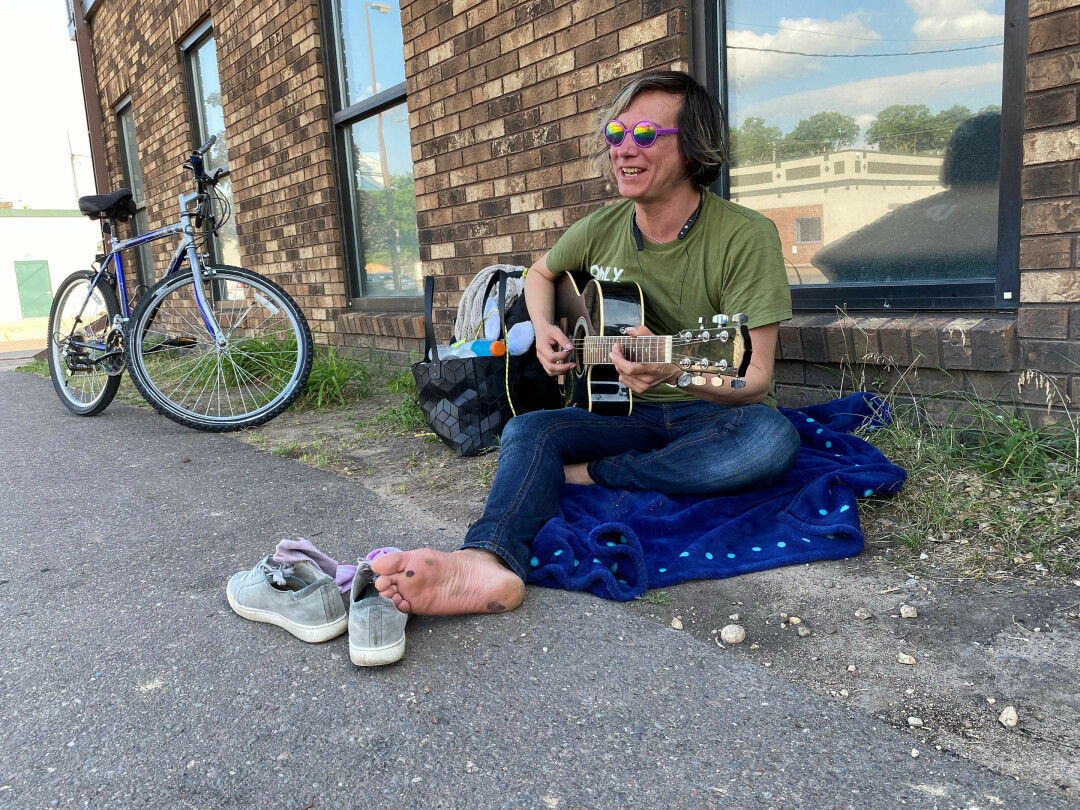
photo by Julian Emerson
Ellie Burns plays guitar and sings outside of the Sojourner House homeless shelter in downtown Eau Claire on a recent evening. Leaders of local agencies who work with homeless people say that population appears to have grown during the coronavirus pandemic and more resources and new approaches are needed to more effectively address their needs.
“How do we best meet the needs of people without housing?” she said. “That has to be our focus.”
Giese, the health department director, agreed. Most often attempts to address homelessness are reactive, she said, and don’t focus on preventing people from losing their homes in the first place. That is due in part to a lack of resources, and because no one person is tasked with “finding strategic solutions upstream,” she said.
“Making progress on our homeless situation in Eau Claire is going to take new approaches,” she said. “That is really hard and really messy. It will take commitment and real, sustained effort.”
Jason and Christina Fleming hope that is possible. The couple admit to past drug abuse and mental health struggles and said they and many who are without homes would benefit from more resources in those areas.
“So many of us need help with addiction, with our mental health, with other problems,” Jason said. “Right now there doesn’t seem to be nearly enough of that.”
On a recent Monday the couple learned they would spend the coming week at a motel, courtesy of a donation from a Chippewa Falls church. They were optimistic at the chance to get a respite from life on the streets, optimistic that Jason will get a job soon, optimistic they eventually will be able to afford a home of their own.
“You have to be hopeful,” Christina said. “It’s the only way you have a chance of getting to a better place.”
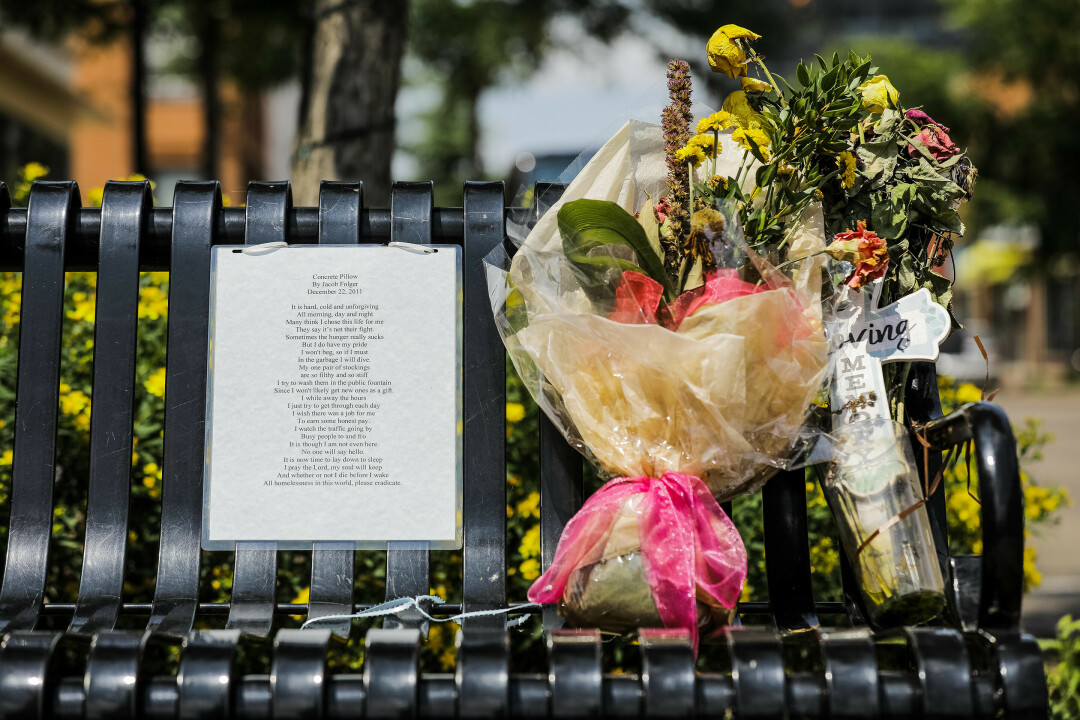
photo by Andrea Paulseth
Marilyn Roeber memorial poem, click to view larger.
How to Help
Here's a list of Chippewa Valley community organizations that help with homelessness and food insecurity.
WORK UNDERWAYDiscussion Planned
Representatives of Eau Claire’s public and private sectors are taking steps to address the growing issue of the unhoused in the city. Downtown Eau Claire Inc. (DECI) is currently organizing a discussion of these issues this summer that will include agencies working directly with individuals experiencing homelessness, as well as downtown businesspeople and elected leaders.
This conversation is expected to lead to a public forum in the near future, which will foster deeper discussion among the broader community. Keep an eye on downtowneauclaire.org and local media for details on that event as they develop.